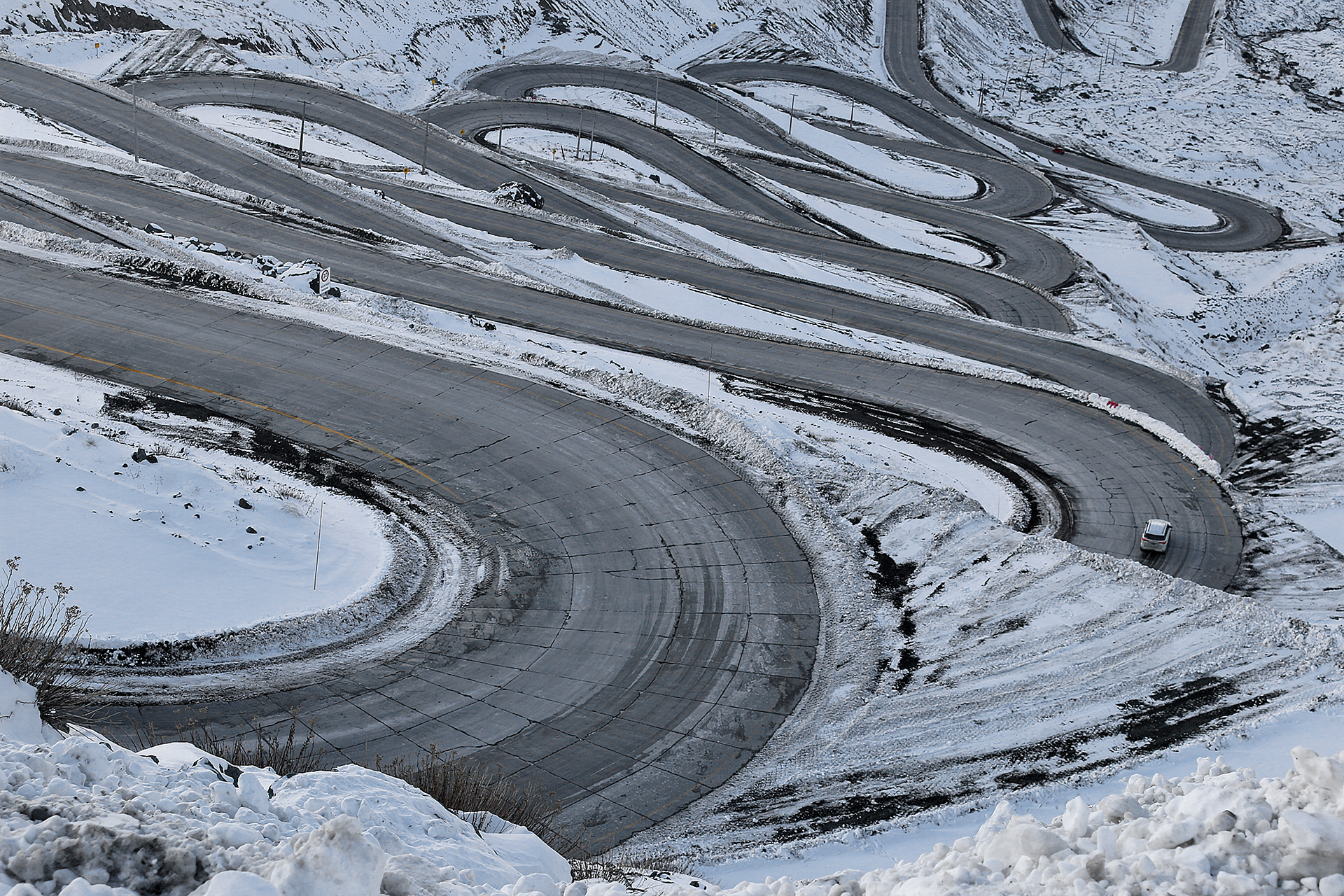At least 1.5 billion cars and trucks ply their ways up and down roads around the world every day, according to this article written by Matthew Nitch Smith as part of a collaboration between the World Economic Forum and Business Insider — and that number is expected to almost double by the year 2040…
The Most Dangerous Roads in Almost Every Country in the World
…and when you consider that each one of those vehicles carries at least one human life, that as many as 1.35 million people die in road crashes every year, according to the World Health Organization should be of no surprise — even though the majority of drivers are working full-time to avoid colliding with others. Greater than half of these deaths are among pedestrians, cyclists, and motorcyclists.
If you thought that the ‘quiet time’ of lockdowns, quarantines, and isolations of the current 2019 Novel Coronavirus pandemic would have improved safety due to fewer vehicles being on the road, think again: the danger only worsened during the pandemic, as empty roads encouraged racy driving, and blood spilled. Deaths on roads in the United States increased by eight percent — even though mileage was down by 13 percent.
However, some roads — like some drivers — are better constructed for safety than others.
Budget Direct enlisted Neomam Studios to put on their research safety helmets and go looking for the most dangerous road in almost every country in the world for which accident rates were available by consulting official national web sites of governments and transport associations in each country to find the roads with the highest accident rates. Where no such reports existed, Neomam Studios found the road most commonly listed as the most dangerous — with supporting data — by local news reports and publications.
Government statistics include the likes of the Office for National Statistics in the United Kingdom, and transport associations include the likes of the Australian Automobile Association.
I have been given express written permission to use the maps and the verbatim text from this article from Budget Direct, which highlights the most dangerous roads in almost every country in the world. While Budget Direct has endeavored to ensure the information provided is accurate and current, it cannot guarantee it. Neither Budget Direct nor The Gate accept liability for the information which is presented in this article.
Key Findings:
- The most deadly road in Australia is the M4 Western Motorway — it saw six deaths over a five-year period.
- The deadliest road in the USA is Interstate 45, with 5 fatal accidents for every 100 miles.
- The worst road in the UK is the A1010, with a rate of 7 accidents per one million vehicle-miles driven.
- Highway 90 in Israel claims the most lives in the Middle East — 233 people have died on the road.
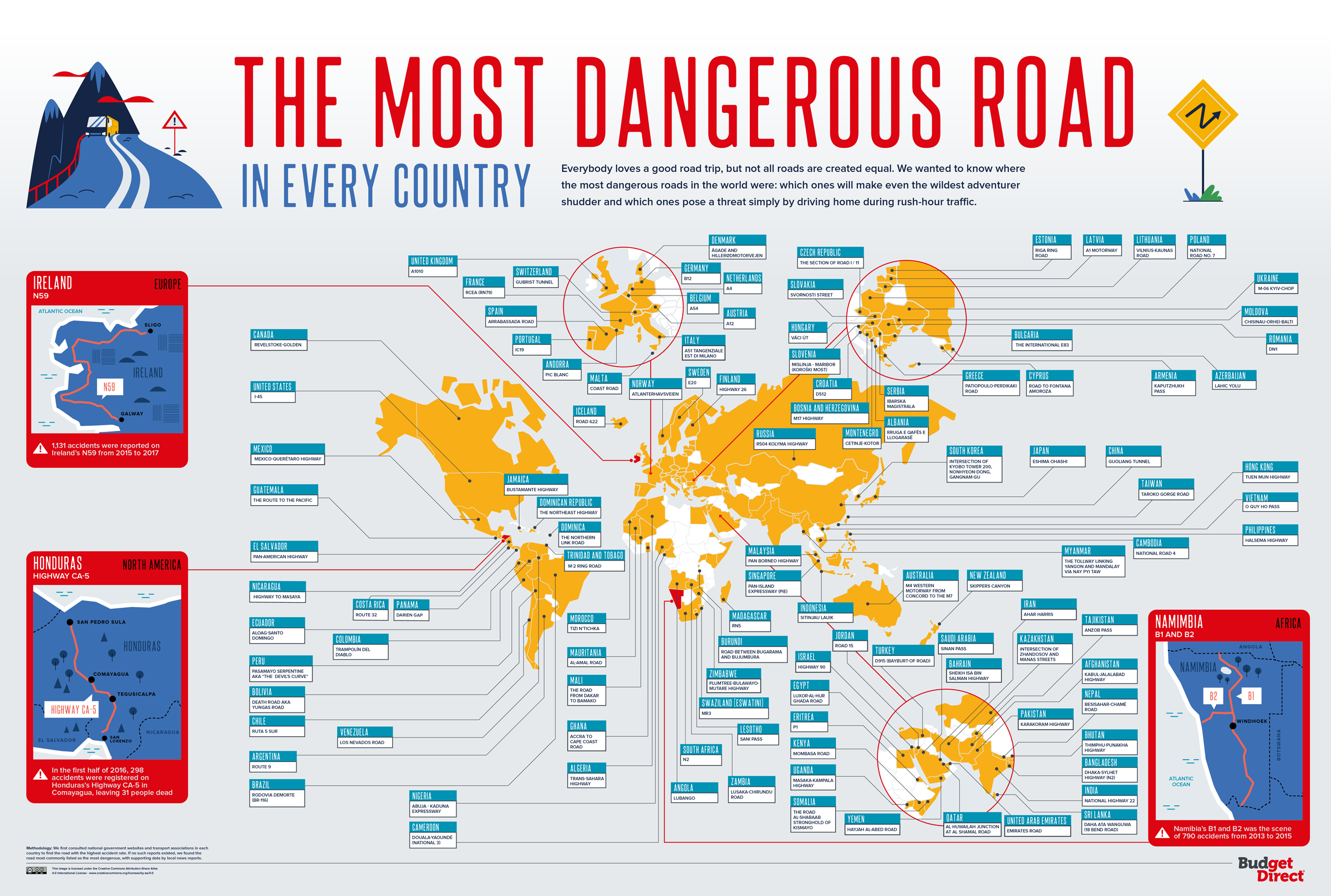
North America
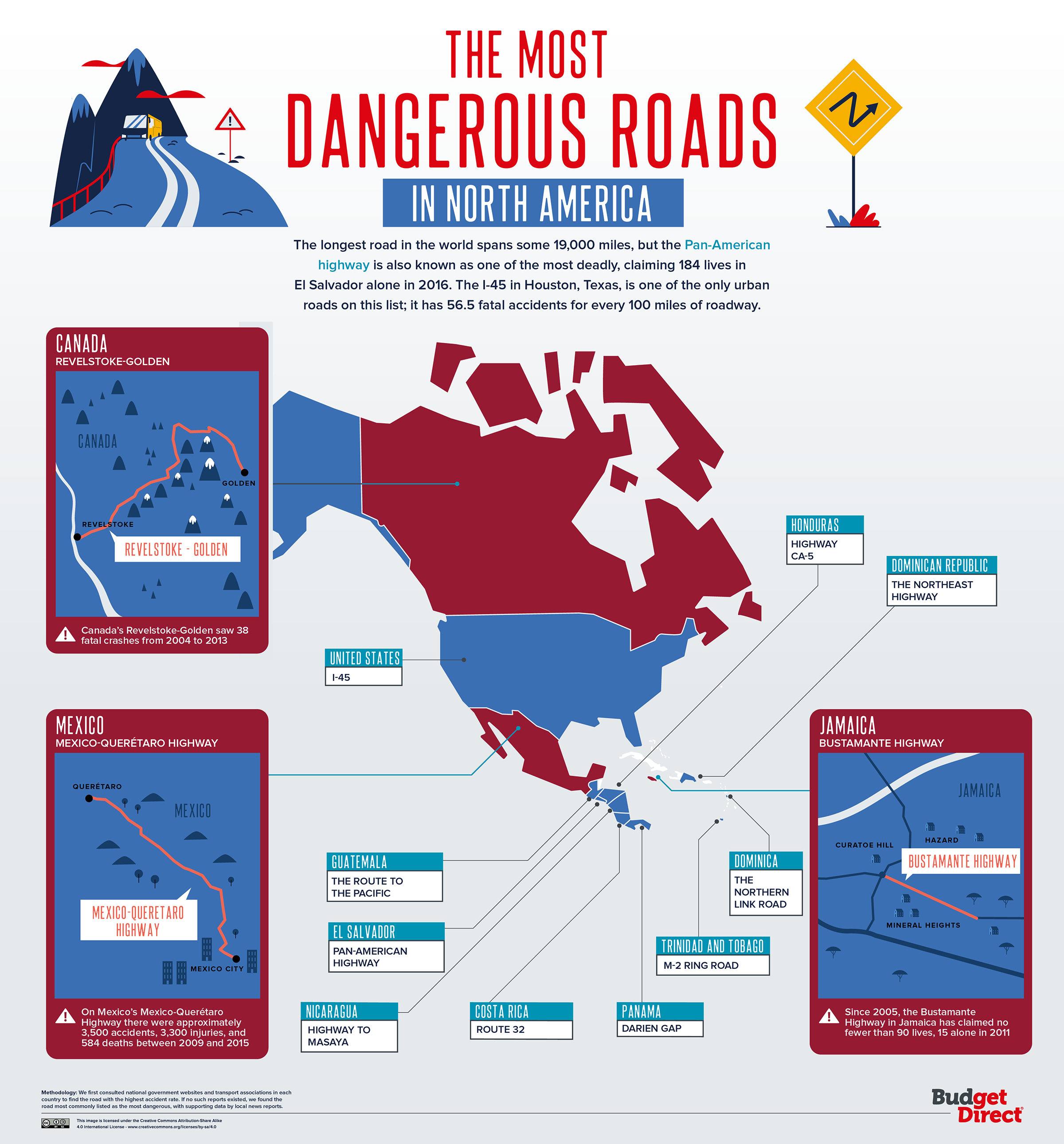
The most deadly road in the United States is Interstate 45, running north from Galveston to Dallas through Houston, Texas. This road has seen 56.5 fatal accidents for every 100 miles of roadway, thanks to a combination of busy, urban stretches and driver complacency. Harris County is currently suing the Texas transportation department to prevent a planned expansion of the deadly road.
Nicaragua’s roads are among the most dangerous in the region “due to pedestrian recklessness, disrespect for traffic signals, and blunders of design,” according to local commentary. In a single year, sixteen people died on a 12 km stretch of the NIC-4 where it meets the NIC-20 on the route to Masaya.
South America
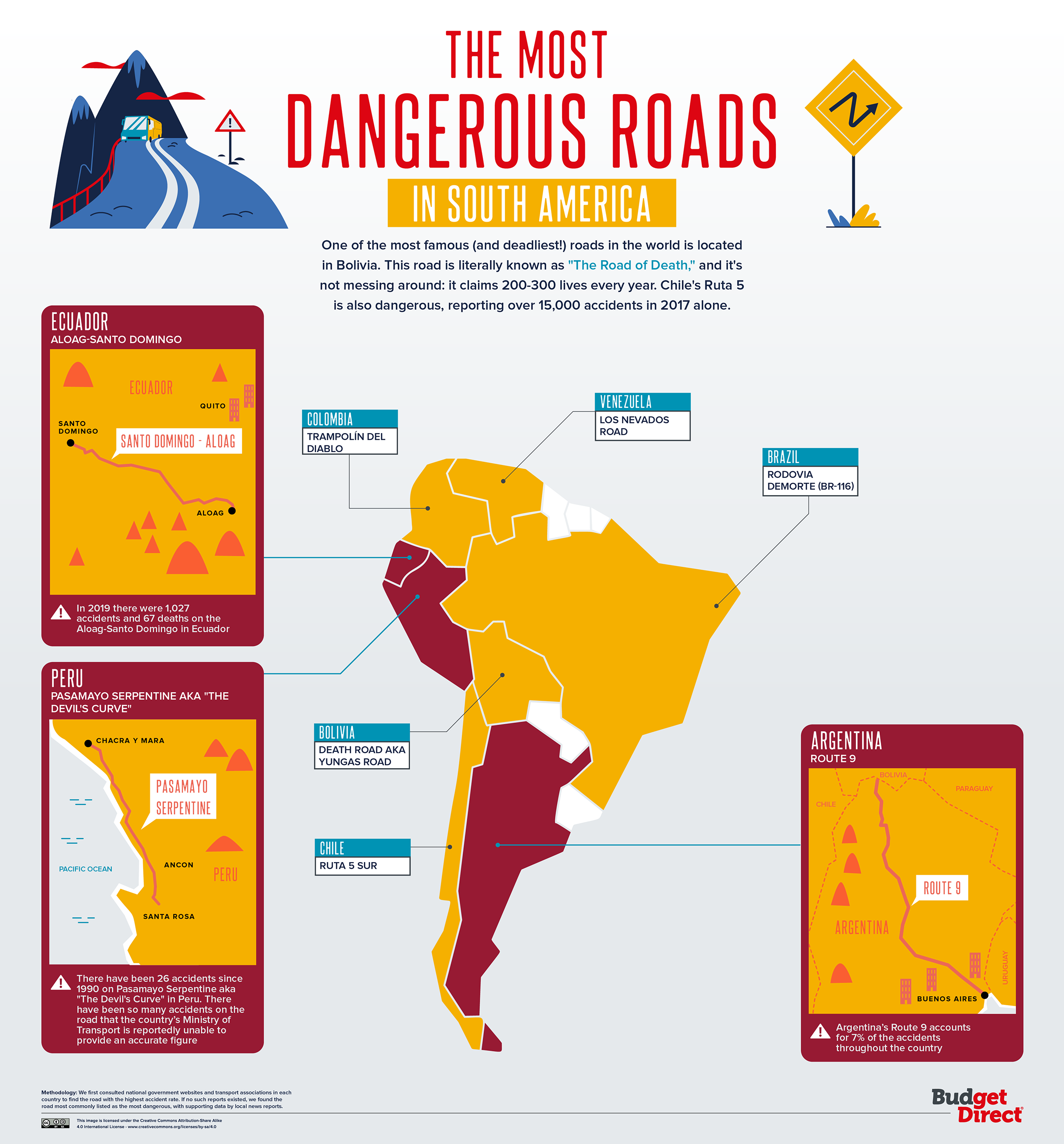
Would you take a route known as Death Road if there was an alternative? Bolivia’s Yungas Road through the Cordillera Oriental mountain chain is such a road. This winding route is mostly less than three meters wide, against a sheer drop of 600m where the road was cut into the mountains in the 1930s.
Mudslides, rocks, and fog loom from above, while there might always be a rogue cyclist coming at you round the next bend. Plus, it’s the only place in Bolivia where cars must drive on the left – a safety measure (so you can see the edge of the road), but hardly reassuring. Thankfully, with 200-300 perishing here each year, Bolivian authorities built a safer alternative route, and Death Road is now reserved for thrill-seekers.
Europe
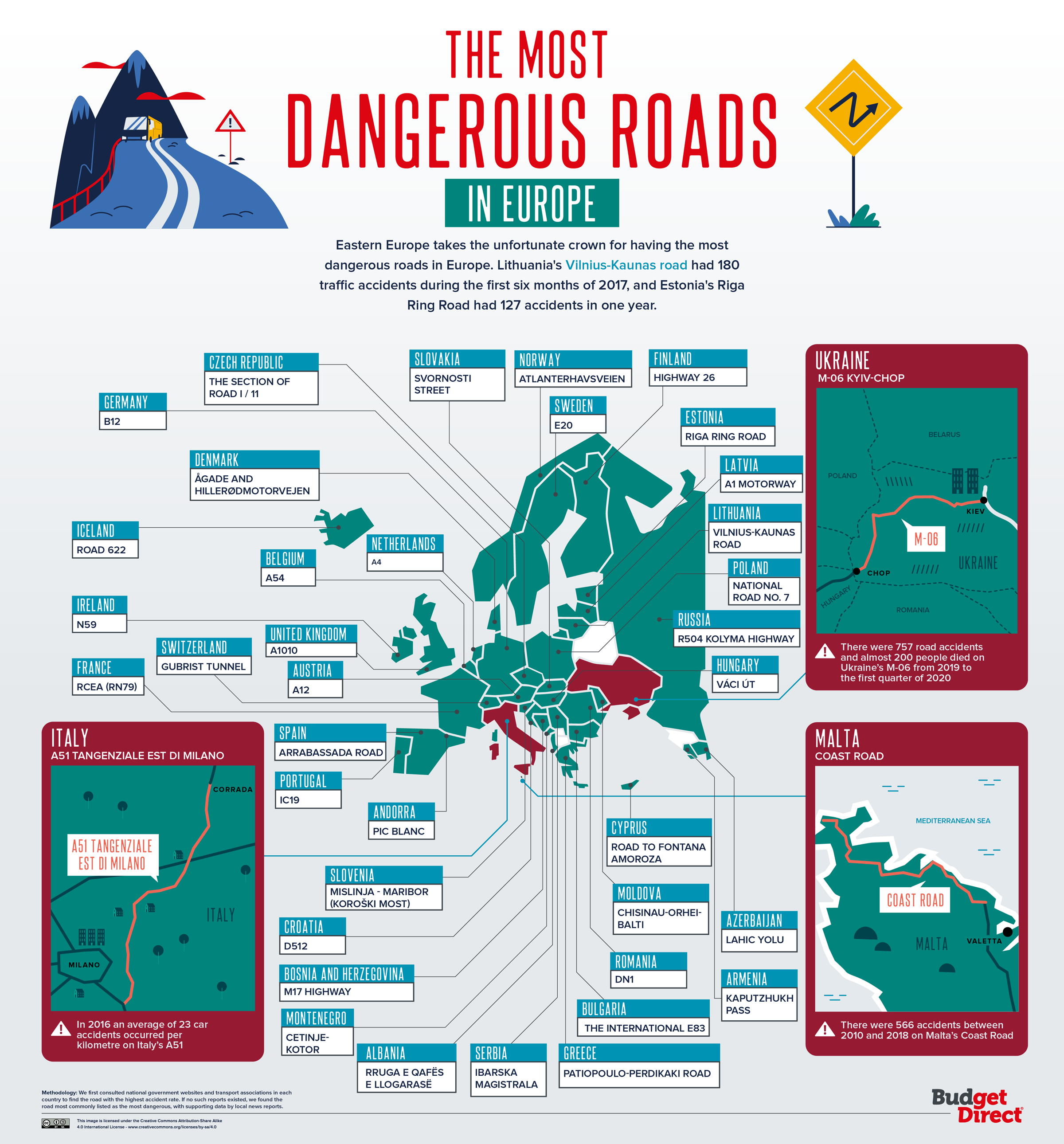
Route 622 along the Northwestern Icelandic coast is like something out of a mythological world. Cliffs lurk over you, the Dýrafjördur and Arnarfjördur fjords lick at your wheels, and the weather gets so extreme that the road is closed altogether for half the year. And that’s just when you’re moving – break down in the middle of nowhere and you’ll find no human life and no phone signal to call for help.
Over half of the UK’s most dangerous roads pass through London. And the worst of all is reckoned to be the A1010 from Tottenham to Waltham Cross, with a rate of 12.7 accidents per one million vehicle-miles driven — nearly nine times the national average.
Middle East & Central Asia
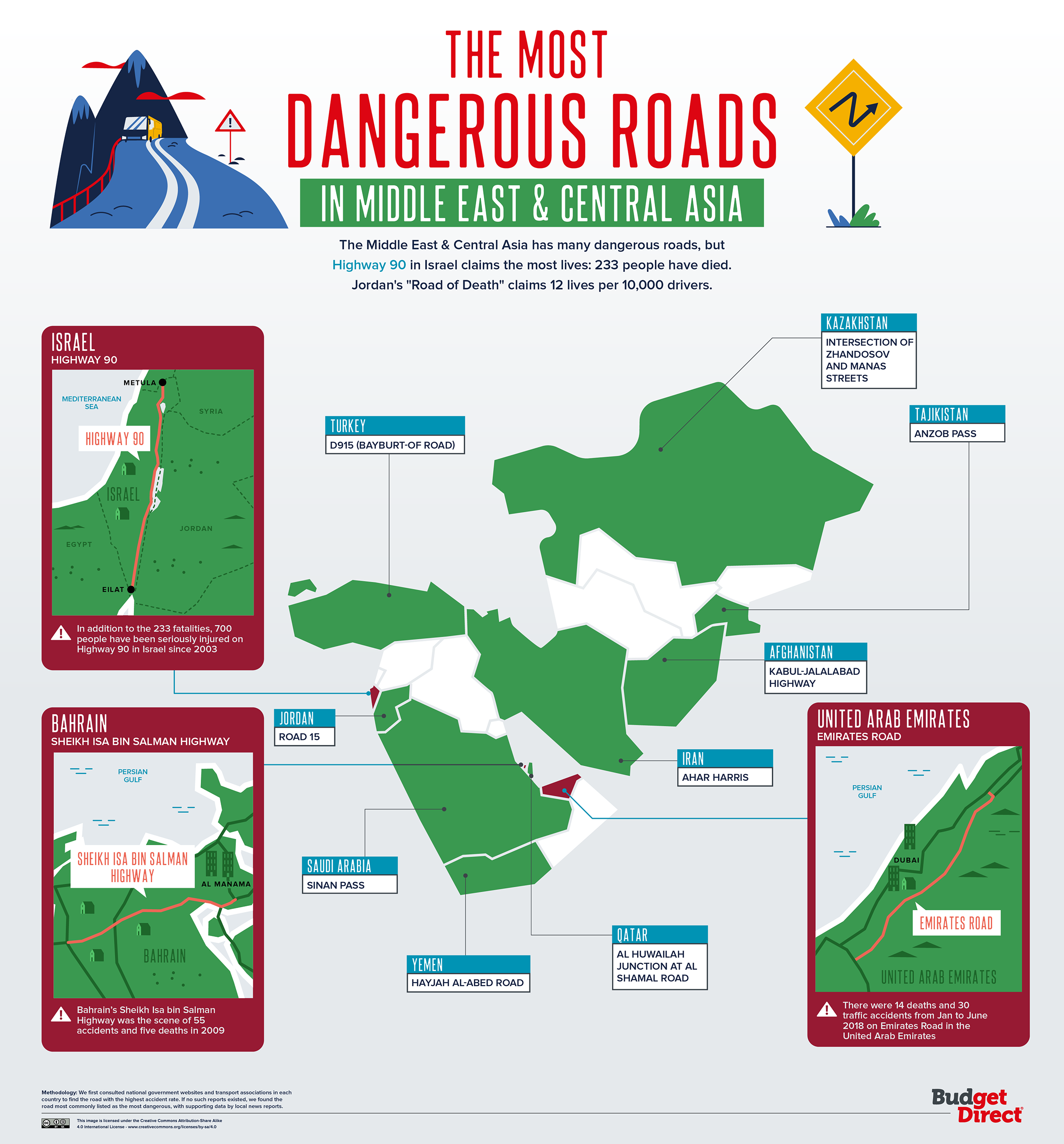
Another road with death in the name: Dead Sea Highway, part of Israel’s Highway 90, is named after its locality, but the name reflects the danger. During one two-week period in 2018, 17 people died here. The road is low, bleak, and old; the newest part built in the 1960s. The lanes are busy, with no barriers between left and right. A casual mistake that you might walk away from on another road will more likely prove fatal on the 90.
“Highway 90 continues to claim lives as a result of poor infrastructure, which is unforgiving to human error,” says Erez Kita, the head of a safe-driving NGO. “It’s a 50-years-old road, and its infrastructure should have been upgraded. It’s always easiest to blame the drivers, but not every mistake should end in death, and the infrastructure is meant to protect drivers even if they make a mistake.”
Rest of Asia and Oceania
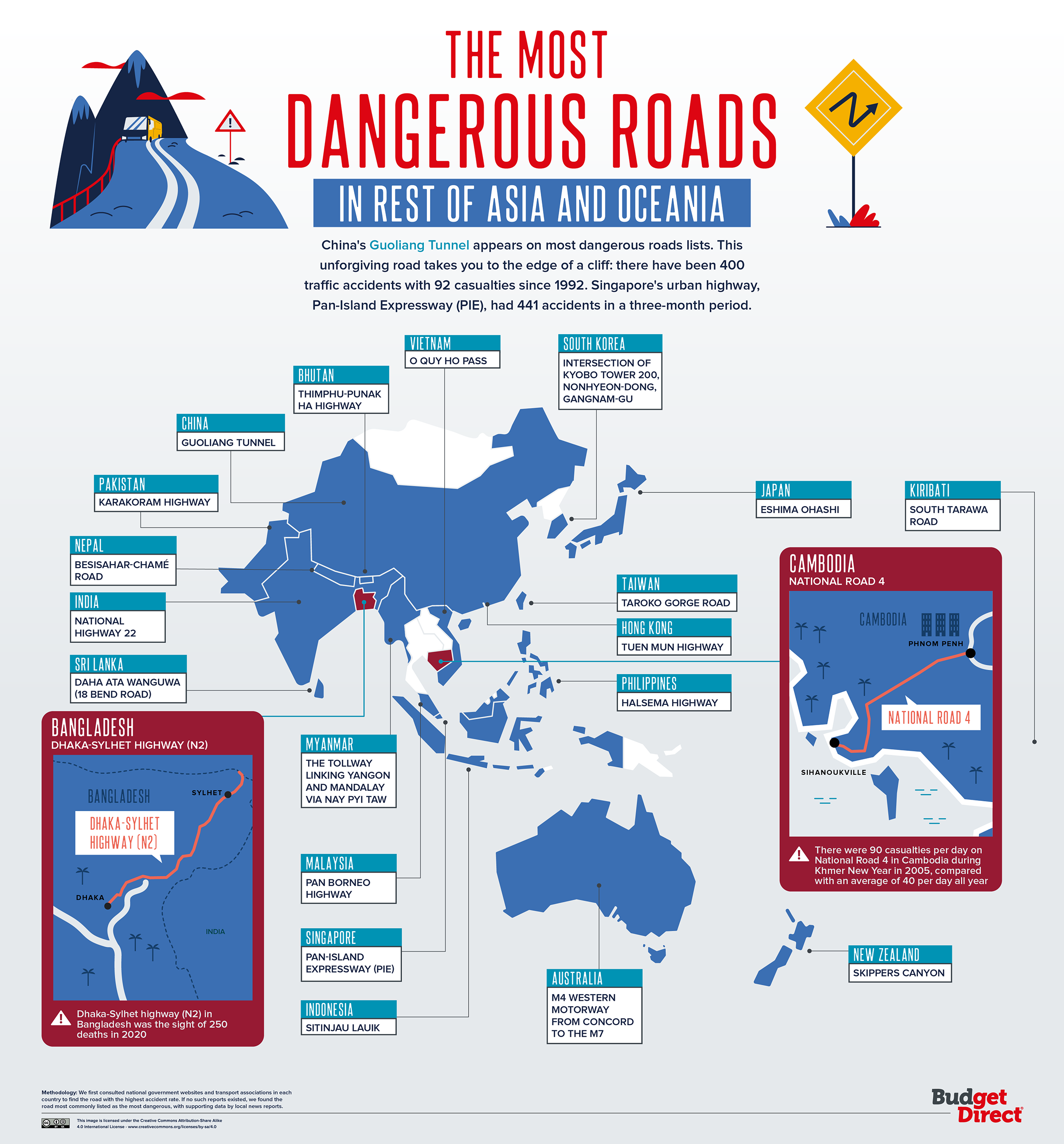
One hundred people die on Australian roads every month, with 2,500 or more seriously injured. The worst spot is the M4 Western Motorway from Concord to the M7 in Sydney. Around 94,000 vehicles drive this 24km stretch every day. It saw six deaths and 788 ‘casualty crashes’ in a five-year period, making it the ‘highest risk’ area — although the Hume Motorway/Freeway has the greatest overall number of crashes involving death or injury.
In 2020, 250 people died on the Dhaka-Sylhet highway (N2), out of 6,686 road deaths across Bangladesh. “There aren’t separate lanes on the Sylhet-Dhaka Highway to facilitate two-way traffic,” says the president of the Sylhet Road Transport Owners’ Workers’ Union. “The road doesn’t have a divider but has traffic from both directions, which is absurd. On top of that, the highway is very narrow.” However, police blame ‘overtaking, overloading, over speeding, and overconfidence.’
Africa
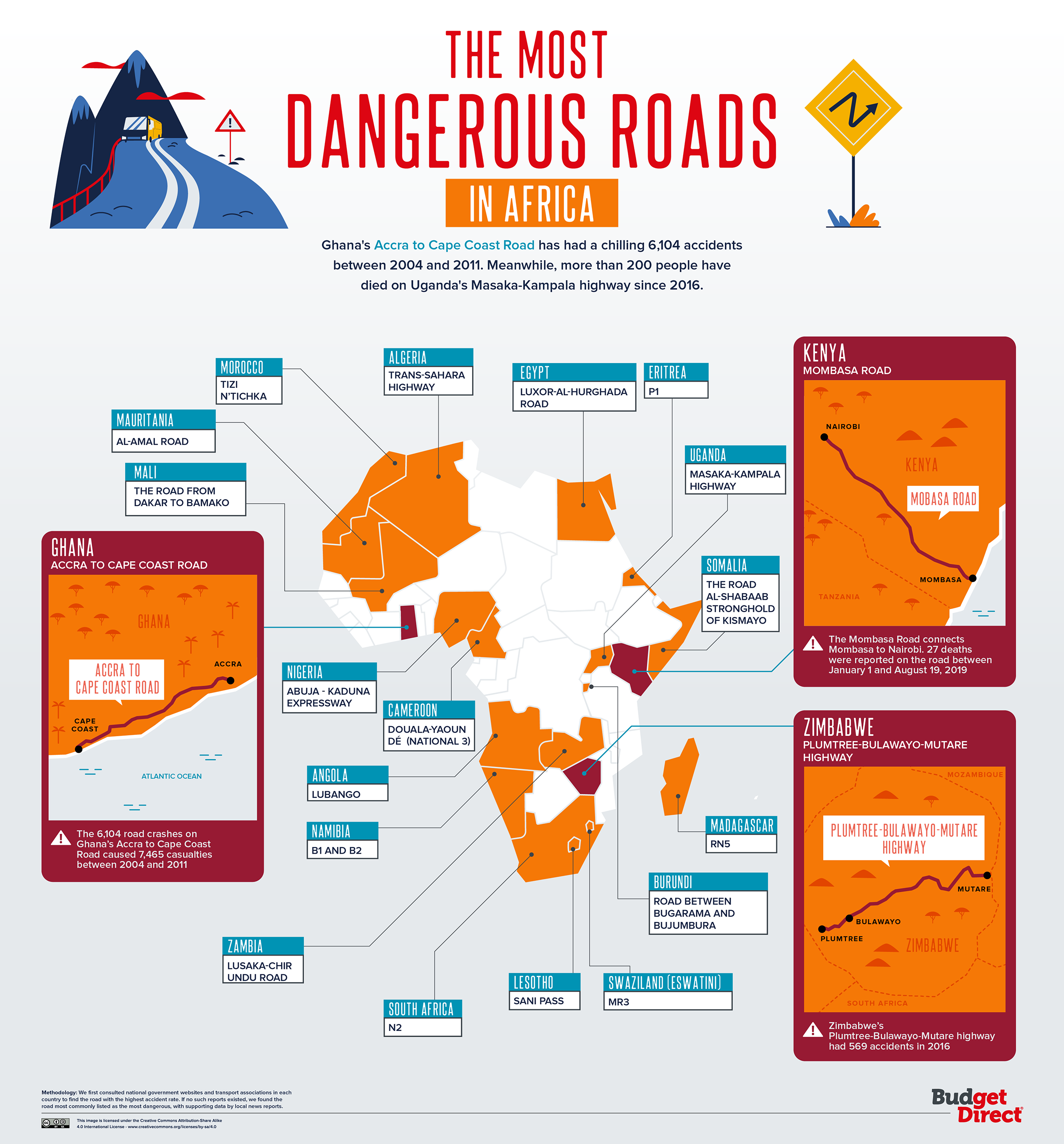
The names of the dead are commemorated on plaques where accidents took their lives on Cameroon’s Douala-Yaoundé road (National 3). Nearly one-third of the country’s 3,000 annual accidents occur on this road. The United Nations classified the National 3 as one of the most dangerous roads in the world in 2014.
In just an eight-month period of 2019, 27 people died on the Mombasa Road to Nairobi, Kenya. During this period, 2,181 people died in total from road crashes across Kenya — and 839 of these were pedestrians. The National Transport and Safety Authority (NTSA) found that the tuk-tuk was the vehicle least likely to be involved in an accident.
Look at our Data
News reports covering road accidents around the world reflect the same sad tale: authorities blame motorists, motorists blame authorities, and people keep dying.
The development of smart road networks and self-driving cars may make the roads safer over the forthcoming years. But their distribution will be uneven, and some countries will always have more dangerous roads than others. Ultimate responsibility falls to us each in our personal and professional capacities as motorists, politicians, and citizens to do our part in keeping the roads safe for our families and everyone around us.
For a look at the data on the most deadly road in every country, check out our interactive table below.
Summary
I was amazed to find that I have either driven or been a passenger on quite a few of the most dangerous roads in the world as according to the information in this article — I purportedly drove on one of the 10 roads you would never want to drive on and did not even realize it — but what exactly does most dangerous mean? Does it constitute rough and untamed topography; the abnormal carelessness of drivers; the amount of criminal activity which is conducted on the road; some other factor; or a combination thereof?
My experiences using some of those aforementioned roads is too much to be related in the summary of this article; so I intend to write about them in at least one future article to be posted here at The Gate.
I do not necessarily agree with all of the information in this article — I would think that more roads in the United States exist which are generally more dangerous than Interstate 45 — and I have a feeling that you have your own thoughts and experiences as to what you believe are roads which should have been included in this article which you will post in the Comments section below…
Although I have driven on the supposed most dangerous road in Chile, the photograph at the top of this article is not it. Photograph ©2019 by Brian Cohen.
